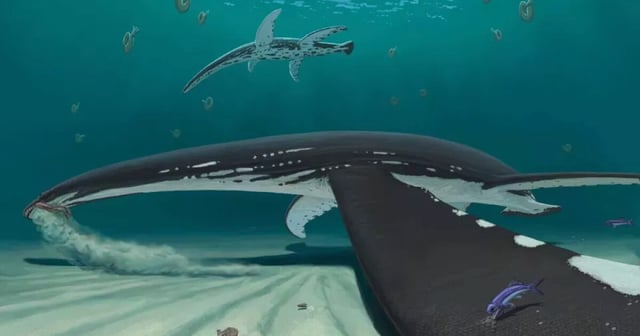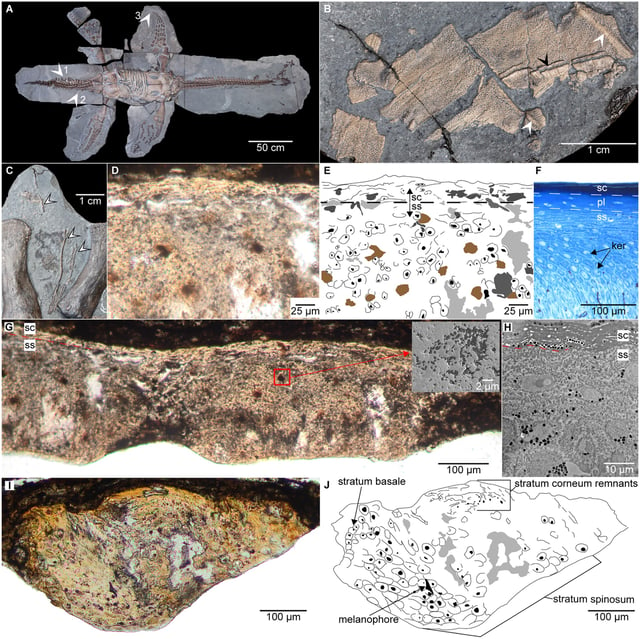Overview
- Researchers analyzed soft tissue from a 183-million-year-old plesiosaur fossil discovered in Germany's Posidonia Shale.
- The study found the marine reptile had smooth, hydrodynamic skin on its tail and scaly skin on its flippers' trailing edges.
- The scales likely improved swimming efficiency by stiffening the flipper edges and helped the creature move along rough seabeds while feeding.
- This exceptionally preserved fossil allowed scientists to observe 183-million-year-old skin cells under a microscope for the first time.
- The findings provide new insights into plesiosaur biology and behavior, aiding in more accurate reconstructions of their appearance and evolutionary history.

